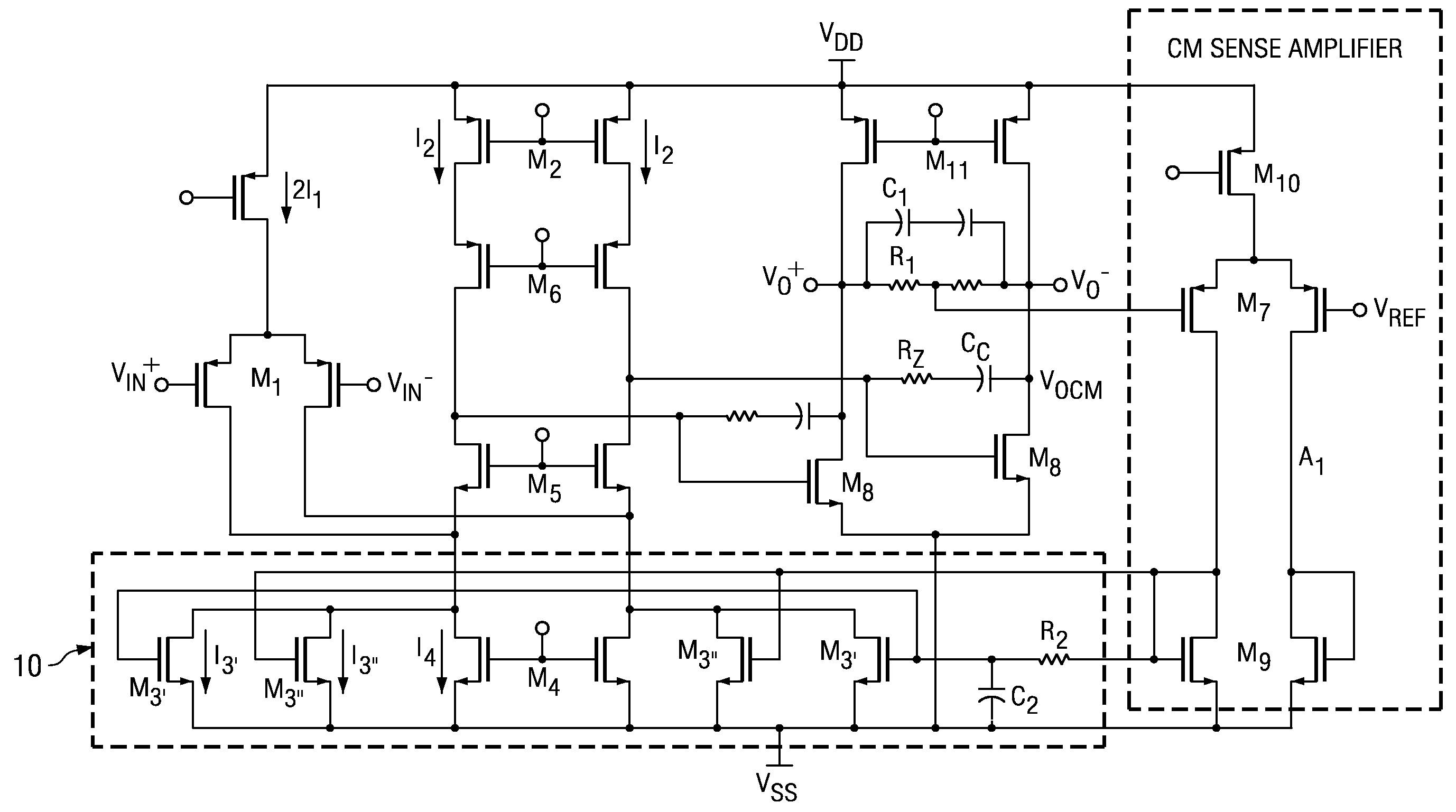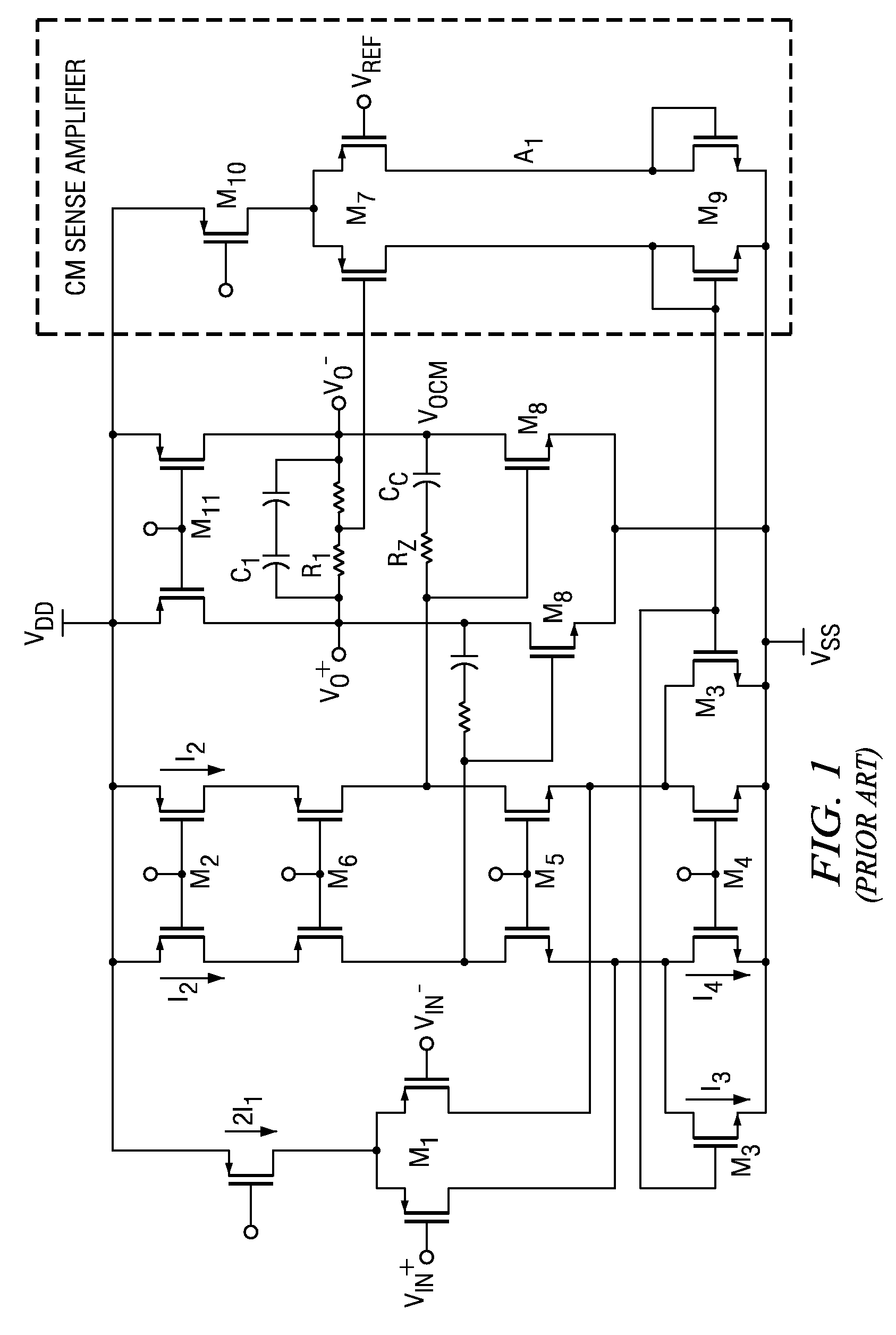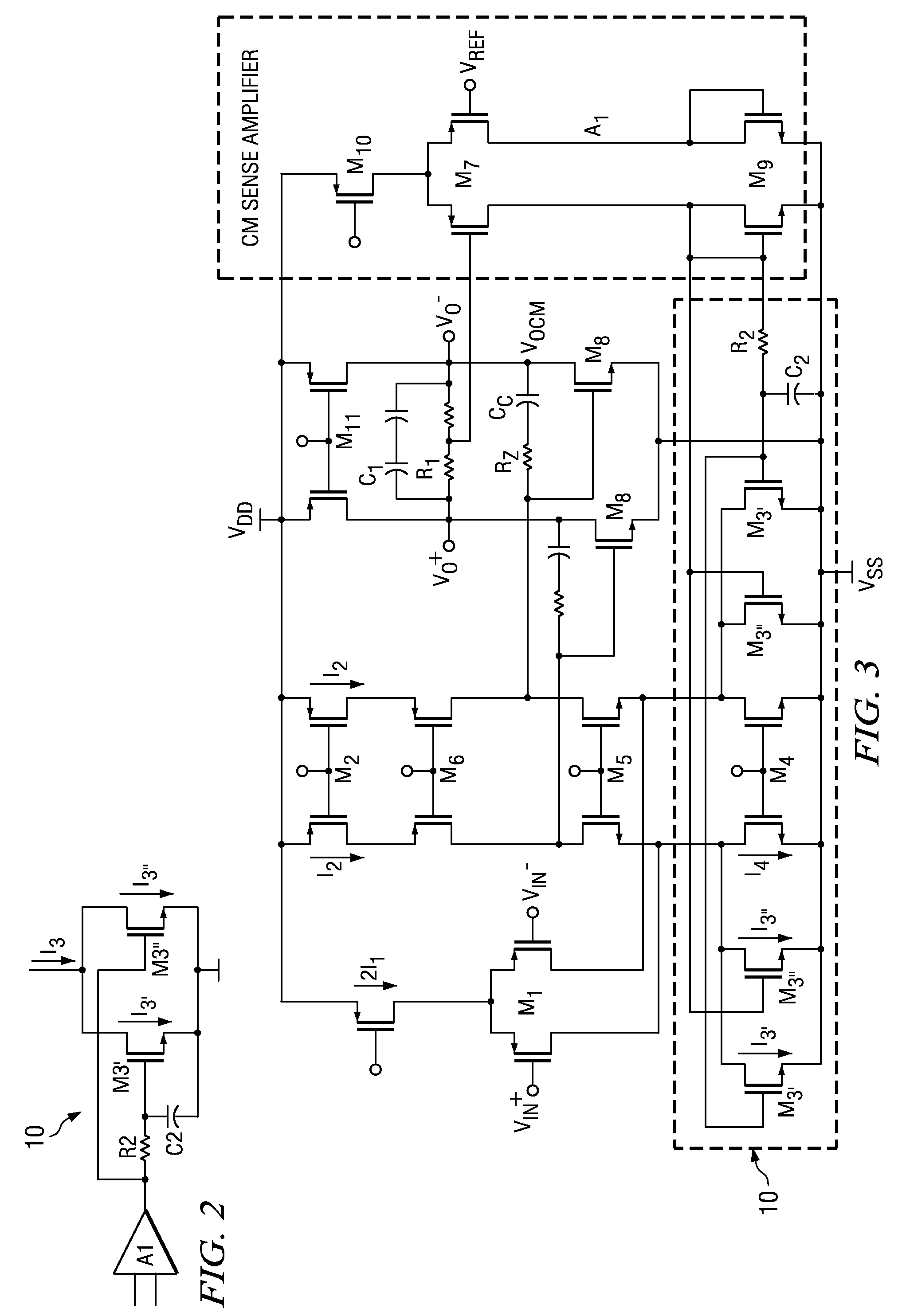Multi-path common mode feedback for high speed multi-stage amplifiers
a multi-stage amplifier and common-mode feedback technology, applied in the field of electronic semiconductor devices and manufacturing, can solve the problems of ineffective cmfb loop, high-speed circuit implementation problems, and need for a common-mode feedback (cmfb) circuit, and achieve the effect of low transconductance gain and large transconductan
- Summary
- Abstract
- Description
- Claims
- Application Information
AI Technical Summary
Benefits of technology
Problems solved by technology
Method used
Image
Examples
Embodiment Construction
[0021]In general, the invention provides multi-path common mode feedback (CMFB) methods and systems having large transconductance gain at low frequencies, and also having a low transconductance gain at high frequencies in the CMFB loop. The multi-path techniques of the invention avoid the occurrence of latching states and maintain increased stability in the CMFB loop.
[0022]Referring to FIG. 2, a circuit method and system having a multi-path common mode loop according to the principles of the invention is shown in a simplified block diagram. Those skilled in the arts will appreciate that there are two contradictory aspects desirable for implementation of common mode feedback systems for high-speed two-stage amplifiers: for stability, it is desirable to have small bandwidth; for avoiding latching states, it is desirable to have large bias currents. As circuit illustrated in FIG. 2, the invention provides two distinct paths in the common mode feedback loop 10, herein denominated the “s...
PUM
 Login to View More
Login to View More Abstract
Description
Claims
Application Information
 Login to View More
Login to View More - R&D
- Intellectual Property
- Life Sciences
- Materials
- Tech Scout
- Unparalleled Data Quality
- Higher Quality Content
- 60% Fewer Hallucinations
Browse by: Latest US Patents, China's latest patents, Technical Efficacy Thesaurus, Application Domain, Technology Topic, Popular Technical Reports.
© 2025 PatSnap. All rights reserved.Legal|Privacy policy|Modern Slavery Act Transparency Statement|Sitemap|About US| Contact US: help@patsnap.com



